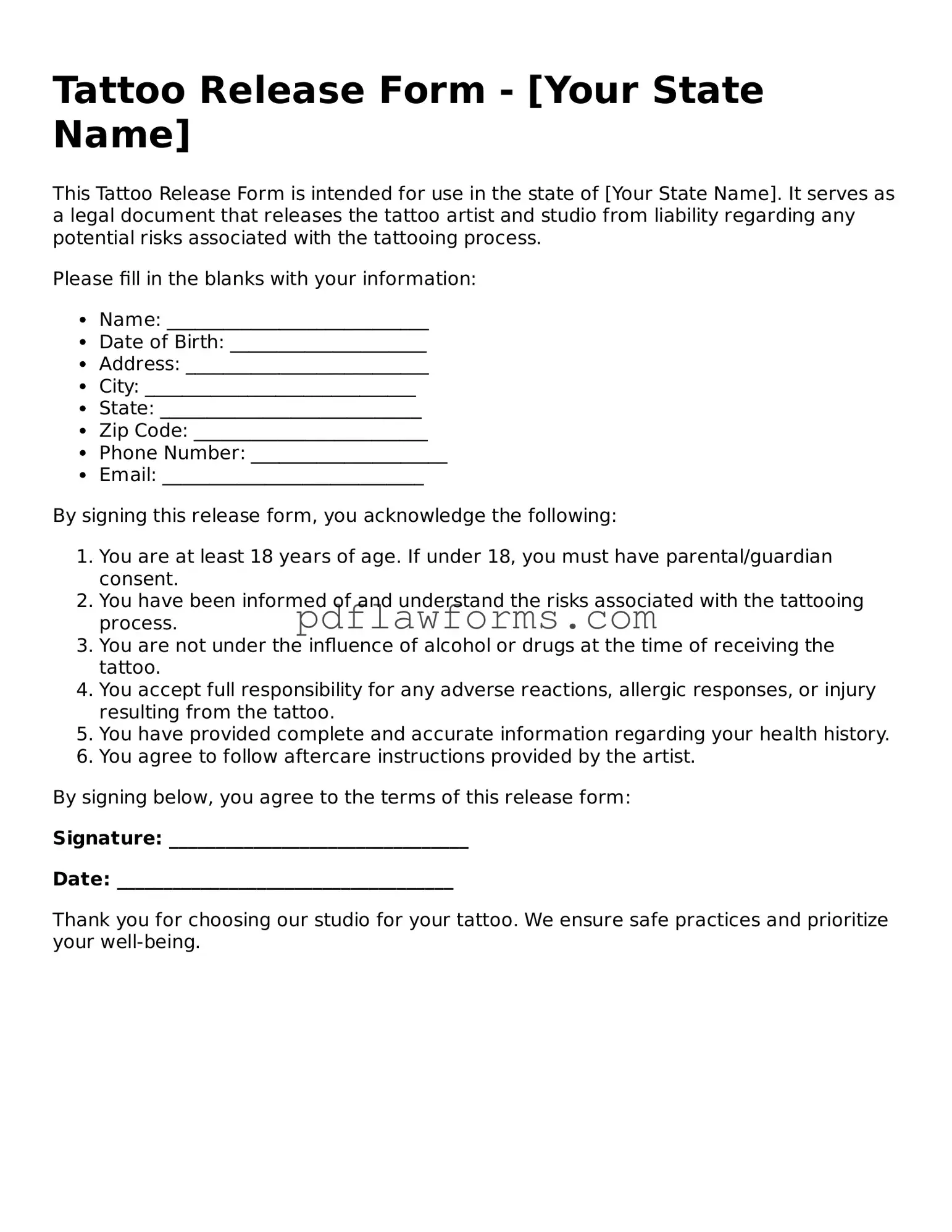Official Tattoo Release Form
A Tattoo Release form is a legal document that grants permission for a tattoo artist to create a tattoo on a client’s body. This form outlines the rights and responsibilities of both parties, ensuring that the client understands the risks involved and releases the artist from liability. To protect yourself and your artist, consider filling out the form by clicking the button below.
Make My Document Online
